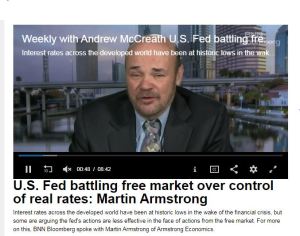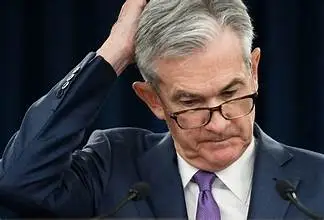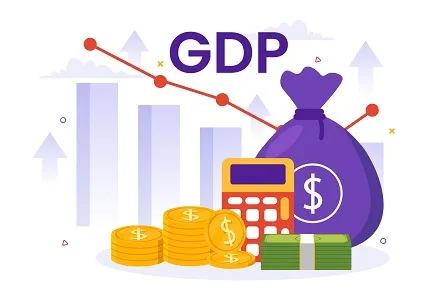My January 2020 interview with Andrew McCreath from BNN Bloomberg came up in recent conversation, and I was asked how I knew then that we’d be where we were at now. My answer is the same — I just follow the models. Some unfamiliar with my work merely looked at the headline “DOW 40,000” and dismissed my forecast as if it were my personal opinion. The Dow was 29240 on the day of the interview and while many feared a correction was coming I explained any dip was likely short-term in nature that that it would need to drop below 19000 to be truly considered a bear market and – BUT that fell on deaf ears. Even with the notable COVID dip that soon followed this interview, the market bounced right back to new highs thereafter and the models stayed on track over the long term. We experienced one of the most HATED bull markets in history. Despite all of the turmoil over the years, The Dow consistently went up for over a decade but all the talking heads insisted it would go down.Now, those same analysts are mad that they missed the entire bull market. The short-term forecast called for a dip in 2020 and a chance to get in on the action (and COVID provided that dip in spades), but I explained that there would not be a change in the long-term trend as my computer indicated we would enter a private wave that would peak in 2024 and go off into a half-8.6-year cycle into 2028. This was all indicated by the computer system as no individual could have foreseen the events that have unfolded over the past four years.All of the models were heating up for 2024. This is why we focus primarily on the long-term, and closely monitor capital concentration – follow the money. There was trouble in Europe and Asia, so the capital needed to flee, and that safe haven happened to be the US. It is America’s final years as the leading financial capital of the world as historically it always changes. America dethroned Britain after World War II and China is on it’s way to dethrone America after 2032.
I also pointed out that inflation would be the focal point for 2024, leading to interest rates changing and becoming a key factor for central banks globally. Volatility paired with the private wave, where capital must escape the public sector, would also lead to an uptick in the commodity cycle.The business cycle cannot be manipulated, but it can be analyzed. However, that’s not how most market analysts work. Long-term, macro requires looking at every market throughout the globe, studying past behavior through historical patterns in price and time. The models do a tremendous job doing this.
Now, everyone is praising the rising Dow that will touch the 40,000 level. Of course, it is easier to say that now that we are almost there. Again, few believed me back in 2020, but here we are. Governments throughout the world are still in trouble and the money remaining on the grid is fleeing into the US. This is another reason why I watch the Dow a bit more closely than the S&P 500, as it provides a more accurate indicator of the big foreign money piling in from throughout the world.For those who wrote in asking if I still stand by my claims – yes, the computer is still indicating that we are looking at a Dow that could rise to 65,000 by 2032, when we are likely to see a change in not just the markets but governments worldwide. I wish I could tell you something different.
A Look Back At Socrates’ Forecasts from January 2020
Posted Mar 11, 2024 by Martin Armstrong |
Categories:
Tags:










